
Tigridia, is a genus of bulbous or cormous flowering plants belonging to the family Iridaceae. With common names including peacock flowers, tiger-flowers or shell flowers, they have large showy flowers; and one species, Tigridia pavonia, is often cultivated for this. The approximately 60 species in this family grow in the Americas, from Mexico down to Chile.
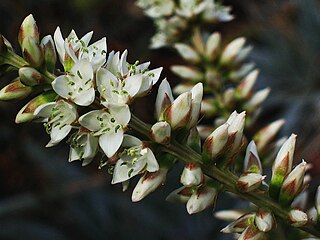
Hechtia is a genus of plants in the family Bromeliaceae, and is the sole genus of the subfamily Hechtioideae, containing 75 species. Its species are native to Mexico, Central America, and Texas.
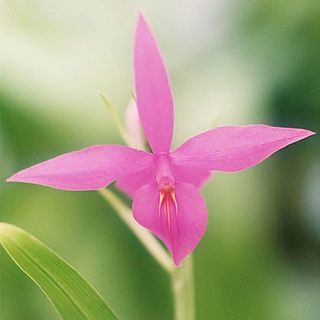
Barkeria, abbreviated Bark in horticultural trade, is a genus of orchids. It consists of about 17 currently recognized species native to Mexico and Central America. This genus was once considered part of Epidendrum. Type species is Barkeria elegans; this is now considered a synonym of B. uniflora yet retains its status as type per ICN.

Trixis is a genus of shrubs in the family Asteraceae, native to North and South America including the West Indies.

Adenophyllum is a small genus of plants in the tribe Tageteae within the family Asteraceae. It contains ten species known generally as dogweeds.
Carminatia is a genus of annual plants in the family Asteraceae. They are native primarily to Mexico, but also the southwestern United States and Central America.

Sigesbeckia is a genus of annual plants in the family Asteraceae. St. Paul's wort is a common name for some of the species. Sigesbeckia is widely distributed and has been traditionally used for the management of chronic diseases, including arthritis.
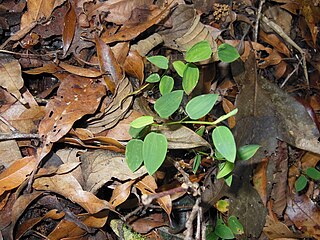
Zeugites is a genus of flowering plants in the family Poaceae. Its species are native to the Caribbean, Mexico, Central America, and South America.

Microspermum is a genus of Mexican flowering plants in the tribe Eupatorieae within the family Asteraceae.

Jouvea is a Latin American genus of coastal plants in the grass family. It grows on mud flats and coastal sand dunes from northern Mexico to Ecuador.

Tridax is a genus of flowering plants in the family Asteraceae.

Trigonospermum is a genus of Mesoamerican plants in the family Asteraceae.
Florestina is a genus of flowering plants in the sunflower family, native to Texas, Mexico, and Central America.

Hymenostephium is a genus of flowering plants in the family Asteraceae. It includes herbs and slender shrubs that occur from Mexico through to Venezuela and north-western Argentina.
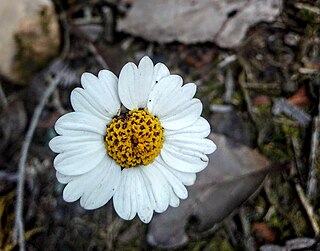
Sabazia is a genus of Colombian and Mesoamerican plants in the tribe Millerieae within the family Asteraceae.

Lasianthaea is a genus of flowering plants in the family Asteraceae. The species are native primarily to Mexico, with one species extending just over the border into the United States and another south to northwestern South America.

Perymenium is a genus of South American and Mesoamerican plants in the tribe Heliantheae within the family Asteraceae.
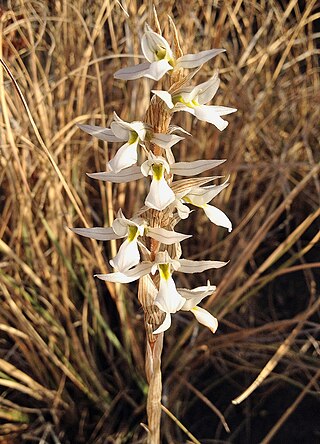
Deiregyne is a genus of flowering plants from the orchid family, Orchidaceae, native to Mexico, Guatemala and Honduras.

Gibasis is a genus of flowering plants within the Commelinaceae family, first described in 1837. It is native to the Western Hemisphere from Texas and the West Indies south to Argentina, with most of the species native to Mexico.

Crusea is a genus of angiosperms in the family Rubiaceae. The genus is found in the south-western United States, Mexico, and Central America. A few species are naturalized in Cuba and Puerto Rico.

















